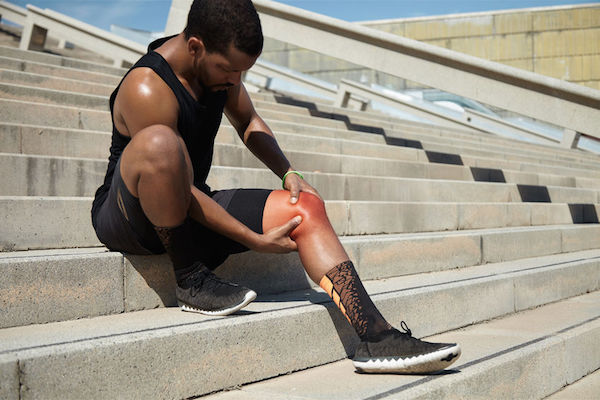Compartment syndrome is a condition in which there is increased pressure in a muscle compartment. This can result in muscle and nerve damage, and problems with blood flow.

Groups of muscles in the arms and legs, together with the nearby blood vessels and nerves, are contained in an enclosed space surrounded by layers of tissue called fascia. Compartment syndrome occurs when pressure in a compartment affects the function of the muscle and tissues.
There are two types of compartment syndrome: acute and chronic. Acute compartment syndrome usually happens after a fracture or a crush injury (an injury involving compression of the body), but causes may include a severe bruise on the muscle.
Chronic compartment syndrome, which is caused by exercise, occurs when pressure in the muscles increases to extreme levels. It leads to cramping pain, mostly in the leg. The pain eases when the activity stops. You may also have difficulty moving the foot and ankle, as well as experiencing visible muscle bulging. It is much less serious than acute compartment syndrome.
What are its symptoms?
Signs of compartment syndrome include severe pain that does not go away when you take pain medicine or elevate the affected area. In more severe cases, symptoms may include:
- Numbness and tingling
- Paleness of skin
- Severe pain
- General weakness
Symptoms depend on whether you have acute compartment syndrome – which happens suddenly – or chronic compartment syndrome, which develops gradually.
Acute compartment syndrome causes the most intense pain, especially when stretching the affected muscle. It is considered a medical emergency because the high pressure inside the compartment may cause permanent muscle and nerve damage.
How is it diagnosed?
A diagnosis typically involves your doctor asking you about your symptoms and medical history. He/she will also give you a physical examination.
Your doctor will look out for pain when the area is squeezed, extreme pain when you move the affected area, and swelling.
To confirm the diagnosis, your doctor may also need to measure the pressure in the compartment. This is done using a needle attached to a pressure meter. The test must be done during and after an activity that causes pain.
What are your treatment options?
There are several treatment options for compartment syndrome depending on the type and severity.
Acute compartment syndrome usually requires surgery, using a procedure called an emergency fasciotomy. Your doctor will cut open the skin and fascia surrounding the muscles, relieving the pressure inside the muscle compartment and prevent permanent tissue damage.
Chronic compartment syndrome is usually not dangerous and can usually be relieved by stopping the exercise and opting for a low-impact option instead.
Your doctor may also recommend physiotherapy, shoe inserts and non-steroidal anti-inflammatory medication.
Can it be prevented?
There is no way to prevent compartment syndrome but early diagnosis and treatment may prevent many of the complications. If you wear a cast, be aware of the risk of swelling. Consult with your doctor if pain under the cast increases, even after you have taken pain medicines and raised the area.
Overtraining and high-impact sports like running, squash and gymnastics can cause compartment syndrome. Be aware of risks and discuss these with your doctor or physiotherapist.
IMAGE CREDIT: 123rf.com
